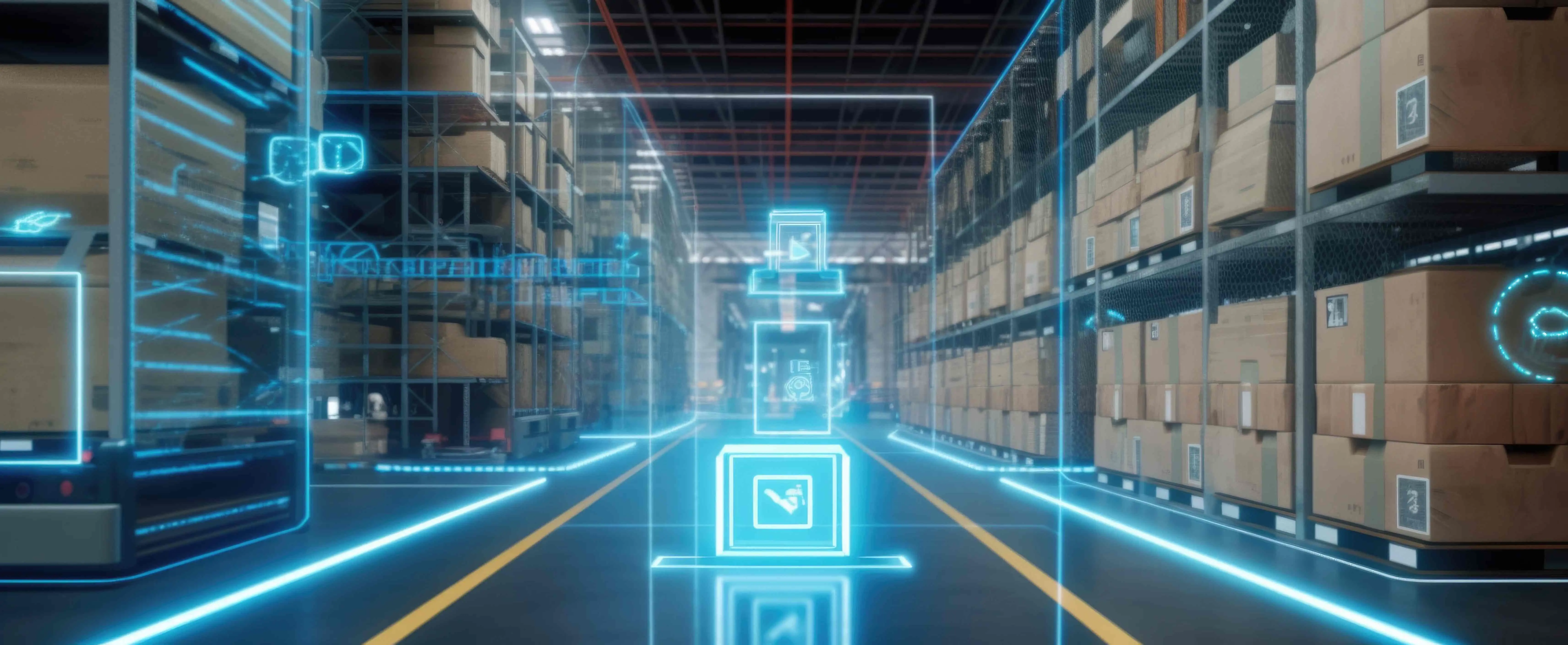How the AI Era is Driving Innovation in the Logistics Sector

AI is revolutionizing the logistics industry, transforming how businesses operate and deliver value. It automates repetitive tasks, optimizes routes, and enhances decision-making. Companies adopting AI in logistics experience improved efficiency and customer satisfaction. With the market projected to grow to $58.55 billion by 2031, embracing AI ensures you stay competitive in this evolving landscape.
Key Takeaways
AI makes logistics better by automating jobs and planning routes.
It also helps businesses make smarter choices faster.
Predictive tools guess future needs, saving money and pleasing customers.
Using AI and teaching workers is key to staying ahead.
Key Areas of AI Impact in the Logistics Industry
Predictive Analytics for Smarter Demand Forecasting
Predictive analytics is transforming how you manage demand forecasting in the logistics industry. By leveraging historical data and real-time insights, it enables you to anticipate customer needs and optimize inventory levels. For example, tools like demand forecasting and route optimization analyze patterns to predict stock requirements and delivery schedules. This approach minimizes stockouts and overstocking, saving costs and improving efficiency.
Benefit | Description |
|---|---|
Enables organizations to generate reliable forecasts, facilitating data-driven and precise decision-making across key areas such as inventory management, logistics, and resource allocation. | |
Cost savings | Businesses can maintain optimal inventory levels with accurate insights into customer behavior and market trends, thus reducing stockouts, overstocking, and costs such as lost sales. |
Enhanced customer satisfaction | Enables businesses to deliver the right products to the right customers at the right time, significantly enhancing customer satisfaction. |
Predictive analytics also supports risk management by identifying potential disruptions, allowing you to plan contingencies effectively. This innovation ensures that your logistics operations remain resilient and customer-focused.
Warehouse Automation: The Role of AI in Logistics Efficiency
Automation powered by AI is revolutionizing warehouse operations. Smart robots and automated systems handle tasks like picking, packing, and sorting with precision and speed. This reduces human error and enhances productivity. For instance, companies like JUSDA utilize advanced inventory management systems such as JusLink to provide real-time tracking and control.
AI-driven automation also optimizes space utilization in warehouses. By analyzing data, it determines the best storage locations for items, improving accessibility and reducing retrieval times. This level of efficiency not only lowers operational costs but also accelerates order fulfillment, ensuring customer satisfaction.
Real-Time Inventory Management with AI
AI enhances real-time inventory management by providing you with up-to-date visibility into stock levels. Advanced algorithms analyze historical data and market trends to predict future inventory needs. This allows you to adjust stock proactively, avoiding shortages or excesses. Automated reordering systems further streamline the process, maintaining optimal inventory levels.
AI-powered solutions also improve supply chain visibility. They monitor shipments in real time, offering insights into potential delays or disruptions. This transparency enables you to make informed decisions quickly, ensuring smooth logistics operations.
Transportation Optimization Through AI-Driven Solutions
AI-driven solutions are redefining transportation and logistics. By analyzing extensive datasets, AI optimizes delivery routes, reducing fuel consumption and travel times. Real-time updates guide drivers through the most efficient paths, ensuring timely deliveries. Predictive maintenance tools also play a crucial role by forecasting vehicle repair needs, minimizing downtime.
These innovations enhance cost efficiency. For example, route optimization not only saves fuel but also improves delivery speed, boosting customer satisfaction. AI ensures that your transportation operations remain both economical and reliable.
Enhancing Customer Experience with AI in Logistics
AI elevates customer experience by offering personalized and efficient services. Real-time tracking provides accurate shipment updates, while automated notifications keep customers informed about delays. AI-powered chatbots handle inquiries 24/7, improving response times and satisfaction.
Proactive issue resolution is another advantage. AI anticipates potential problems and addresses them before they impact customers. This level of service builds trust and loyalty, positioning your business as a leader in the logistics industry.
Innovations and Use Cases of AI in Logistics

AI-Powered Supply Chain Visibility: JUSDA's JusLink Platform
Artificial intelligence is transforming supply chain visibility, offering you real-time insights into every stage of logistics. JUSDA's JusLink platform exemplifies this innovation. By integrating IoT, cloud computing, and big data, JusLink enhances visibility across the supply chain. You can monitor shipments, track inventory, and predict potential disruptions with precision. This level of transparency allows you to make informed decisions quickly, reducing delays and improving operational efficiency.
Enhanced visibility also supports collaboration between suppliers and customers. JusLink's intelligent features enable seamless communication, ensuring that all stakeholders stay updated. This not only streamlines operations but also builds trust, positioning your business as a reliable partner in the logistics industry.
Autonomous Vehicles and Drones Revolutionizing Logistics
Autonomous vehicles and drones are reshaping logistics operations. These technologies offer you innovative solutions for transportation and inventory management:
Drones perform inventory counting in high warehouse areas and assist during disasters.
Self-driving delivery vans reduce last-mile delivery costs, especially in e-commerce.
Autonomous scheduling minimizes delays in on-demand deliveries.
Autonomous vehicles also streamline routes and speed up deliveries. By analyzing real-time data, they avoid traffic and reduce lead times. This improves inventory planning and ensures timely deliveries. Additionally, these technologies enhance safety by reducing human errors and lowering operational costs.
Smart Warehousing Solutions by JUSDA
JUSDA's smart warehousing solutions redefine automation in logistics. With advanced systems like JusLink and eVMI, you gain real-time inventory tracking and control. Automated robots handle tasks such as picking, packing, and sorting, reducing labor costs and errors. These systems also optimize space utilization, ensuring efficient storage and faster retrieval.
JUSDA's warehouses cater to diverse industries, offering tailored solutions for electronics, automotive, and FMCG sectors. By leveraging artificial intelligence, JUSDA enhances operational efficiency and supports your digital transformation journey.
Case Studies: AI-Driven Success Stories in the Logistics Industry
AI has delivered remarkable results in logistics. Here are some notable examples:
Case Study | Key Benefits |
|---|---|
AI-Powered Demand Forecasting | Reduces error rates, optimizes vehicle dispatch, and improves manpower planning. |
AI in Supply Chain Management | Automates tasks, optimizes routes, and enhances customer satisfaction. |
AI in Logistics and Transportation | Provides real-time insights, streamlines operations, and reduces costs. |
AI-Driven Logistics | Achieves a 15% reduction in logistics costs and a 65% improvement in service levels. |
These examples highlight how AI fosters innovation, enabling you to achieve cost savings and operational excellence.
Challenges and Considerations in Adopting AI in Logistics
Overcoming Legacy Systems and Infrastructure Barriers
Legacy systems often hinder the adoption of AI in logistics. These outdated systems lack compatibility with modern AI tools, requiring significant customization or replacement. Additionally, siloed data within these systems can compromise AI’s predictive capabilities. High initial costs for upgrading infrastructure and cultural resistance from employees further complicate the process.
To modernize legacy systems, you can explore strategies like encapsulation, which integrates modern APIs without altering the core system. Replatforming and refactoring improve performance while reducing technical debt. For more extensive upgrades, rearchitecting or rebuilding the system may be necessary. These approaches ensure your logistics operations align with the demands of digital transformation.
Strategy | Description |
|---|---|
Encapsulation | Retains the core system while wrapping it in a modern user interface, enabling integration with modern APIs. |
Replatforming | Migrates the system to a newer platform without changing its core business logic for enhanced performance. |
Refactoring | Rewrites portions of the legacy code to improve maintainability and performance, reducing technical debt. |
Rearchitecting | Redesigns the system’s architecture to support new workflows and scalability, often using agile methods. |
Rebuilding | Develops a new system from scratch while preserving the scope of the legacy system, ideal for outdated frameworks. |
Addressing Data Quality and Integration Challenges
AI thrives on clean, high-quality data. However, logistics data is often unstructured or inconsistent, which limits AI’s effectiveness. Poor data quality can lead to inaccurate predictions and flawed decision-making. To address this, you should standardize and cleanse data using an enterprise data warehouse. Cloud-based solutions or custom-built models can also enhance data integration.
Robust cybersecurity measures, such as encryption and access controls, protect sensitive information during integration. Ensuring compatibility with existing applications and developing a strategic plan for AI adoption further streamlines the process. These steps improve operational efficiency and unlock AI opportunities in supply chain management.
Ethical Concerns and Workforce Implications of AI
AI adoption raises ethical concerns, including data privacy, bias, and workforce displacement. Collecting and using sensitive data responsibly is crucial to maintaining trust. Additionally, biased algorithms can lead to unfair logistics decisions, while automation may displace certain jobs.
You can mitigate these challenges by fostering transparency in AI decision-making and prioritizing workforce reskilling. Training employees to work alongside AI tools creates new opportunities and reduces resistance to change. This approach ensures that AI adoption benefits both your business and its workforce.
Strategies for Successful AI Implementation in Logistics
A clear action plan is essential for implementing AI in logistics. Start by identifying specific problems AI can solve, such as optimizing supply chain operations or enhancing customer experience. Pilot projects allow you to test solutions on a smaller scale before full deployment.
Investing in the right technology and ensuring data quality management are critical. Change management also plays a vital role. Upskilling employees and communicating the benefits of AI foster a culture of innovation. These strategies maximize the potential of AI while minimizing disruptions, driving operational efficiency and digital transformation.
Future Outlook for AI in the Logistics Industry

The Role of AI in Shaping the Future of Supply Chains
Artificial intelligence is set to redefine supply chains by enhancing resilience, transparency, and efficiency. You can expect further automation and precision in operations, with AI enabling advanced demand forecasting and disruption prediction. These capabilities will help you make informed decisions, ensuring smooth logistics even during uncertainties. Autonomous vehicles and drones will also play a larger role, streamlining deliveries and reducing costs.
AI will transform supply chain roles, making them more efficient and data-driven. By analyzing vast datasets, AI-powered tools will help you optimize resources and improve delivery timelines. This shift will not only enhance operational efficiency but also elevate customer satisfaction. A collaborative approach between humans and AI will emerge, combining technological precision with human expertise to achieve better outcomes.
Emerging Trends and Technologies in AI for Logistics
AI trends are shaping logistics in exciting ways. Robotics integrated with AI is revolutionizing automation, handling tasks like sorting and packaging with unmatched efficiency. Drones and autonomous vehicles are reshaping last-mile logistics, offering faster and more reliable deliveries.
Dynamic route optimization is another game-changer. AI predicts disruptions and adjusts routes in real time, saving costs and improving delivery speed. Ethical AI development is also gaining traction, focusing on transparency, privacy, and fairness. These trends highlight the growing importance of smart infrastructure in logistics.
The Importance of Adaptability and Strategic Planning for AI Integration
Adaptability is crucial for successful AI integration. AI systems can scale with your business, handling increased shipments and evolving operational needs. However, integrating AI with existing infrastructure, especially legacy systems, remains a challenge.
Strategic planning ensures smooth AI adoption. Start by aligning AI initiatives with your business goals. A clear action plan, including data standardization and cloud solutions, will help you overcome technical barriers. By prioritizing adaptability and strategic planning, you can unlock AI’s full potential in logistics.

JUSDA Solutions
To provide you with professional solutions and quotations.
AI is transforming logistics, making operations smarter and more efficient. Companies like JUSDA lead this change with solutions like JusLink and smart warehousing.
AI is reshaping logistics by automating tasks and enabling smarter decisions. It drives innovation across supply chains, becoming the backbone of modern operations.
To prepare for this future:
Set clear objectives.
Choose the right partners.
Invest in training.
Embracing AI ensures you stay competitive in this evolving industry.
See Also
Exploring AI's Hidden Capabilities Within Logistics Systems
Transforming Future Logistics Through AI Supply Chain Solutions
Enhancing Supply Chain Performance With AI Innovations
